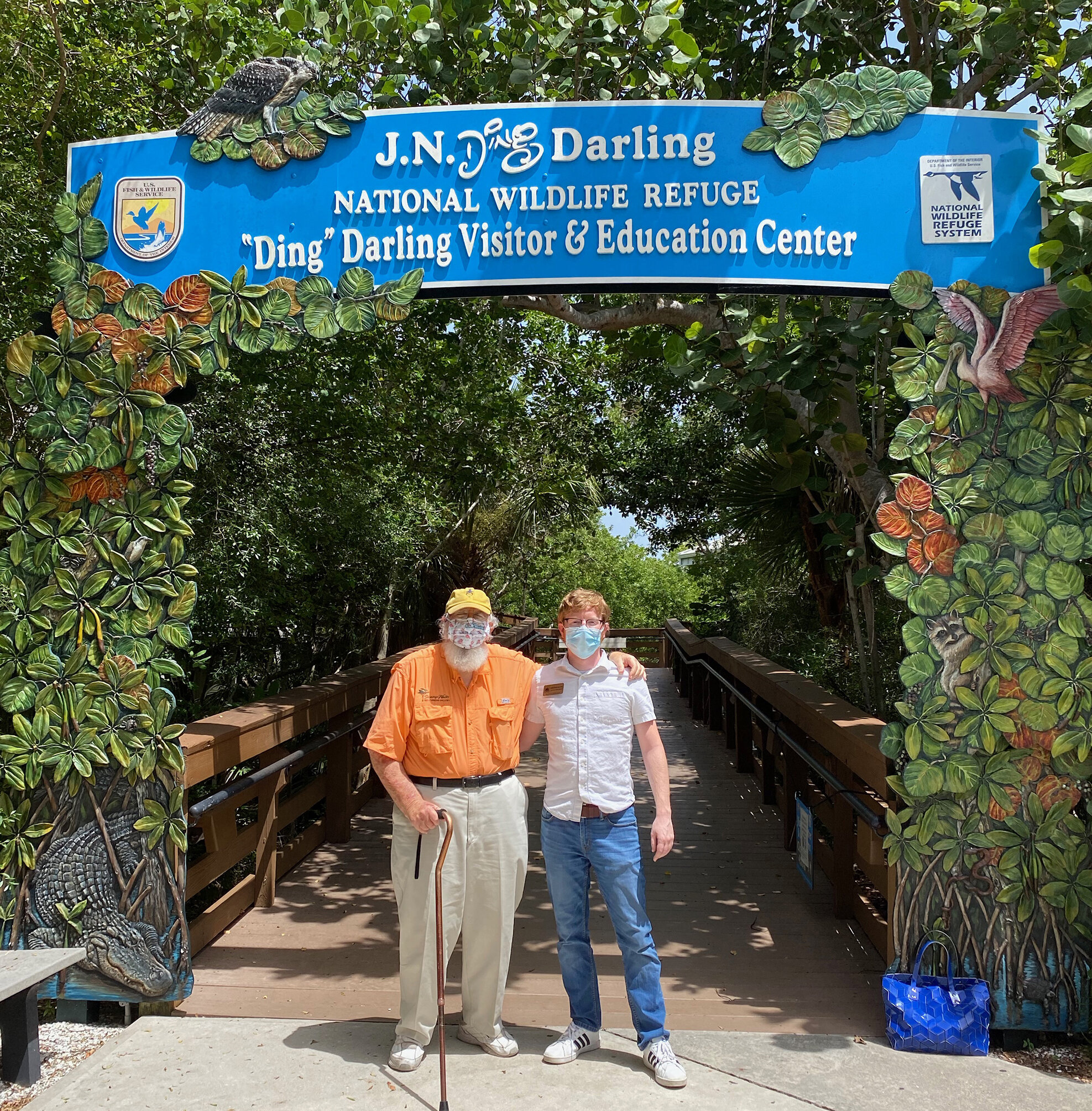Sanibel Island - JN "Ding" Darling National Wildlife Refuge
/Sanibel Island is one of the very few coastal islands surrounding Florida where the environment is NOT run over by high-rise condo’s, houses and canals. The people have chosen to keep it as close as possible to a natural environmental setting. We feel fortunate that we live close to the island and can easily enjoy the beauty.
The main reason the island is “natural” is because of Jay Norwood Darling (“Ding”). Ding Darling and his island neighbors created the J.N. “Ding” Darling Foundation, and with the help of concerned citizens, they created a wildlife refuge, one of the country’s largest undeveloped mangrove systems. Today, the people who work at the J.N. “Ding” Darling National Wildlife Refuge are still as excited about saving these wonderful and unique ecosystems as their forefathers were, so they are a joy to be around.
WE LOVE DING DARLING!!
A little bit of the history:
Jay Norwood Darling started his cartooning career in 1900. His cartoons were featured in 130 newspapers across the country. He was awarded Pulitzer prizes in 1923 and 1942, and in 1934 was named the best cartoonist by the country's leading editors.
He signed his cartoons with "Ding" – derived by combining the first initial of his last name with his last name's last three letters.
Conservation and politics were his passions, so he used his cartoons to emphasize these concerns. His winter home was on Sanibel Island, and as the island's population began growing he, and his island neighbors, created the J.N. "Ding" Darling Foundation. The Foundation, along with many concerned citizens, created a wildlife refuge, one of the country's largest undeveloped mangrove ecosystems. The Refuge was the beginning of an effort that is still on-going to keep the island green, natural, and beautiful as it is meant to be. Today the Refuge consists of 5200 acres and includes Caloosahatchee, Island Bay, Matlacha, and Pine Island National Wildlife Refuges.
Clyde and I are thankful to our fore-fathers who saved this part of Florida so that we can still enjoy the beauty of an island without an abundance of concrete, houses, and high-rise condos, and thankful that the folks who work at the JN “Ding” Darling National Wildlife Refuge are keeping it healthy for future generations.
Clyde with Anne Marie
Clyde with Chris
We met Anne Marie and Chris who joined us for the day. We spent some time in the refuge photographing, and then traveled with them to the Woodring Homestead to do some photography.
Clyde making his way down the boardwalk near the visitor center
Holding back a limb so that Clyde could take a photo - Mother Nature :)
Continuing down the boardwalk
Mangroves in a mound of leaves
An amazing variety in the color of brown…beautiful.
Continuing down the boardwalk
Mangroves
It began raining, so we headed for the car
After the rain let up, we took a drive through the refuge
Ding Darling along the road - not yet on the website, call 941-486-0811 if interested
Woodring Homestead
I love history, so when Anne Marie and Chris invited us to photograph the Woodring Homestead, I was very excited.
Ralph Woodring, whose grandfather was one of Sanibel's original homesteaders, met us, and we spent a wonderful afternoon listening to stories of his life on Sanibel before it became as populated as it is today.
Ralph explained to us that several years ago, he and his wife decided they didn't want their property to be developed, so they approached The Ding Darling Wildlife Society, who helped make saving the property come true. The property was purchased and is to remain in its natural state with the Woodrings having a life estate.
The Woodring Point land connects the Ding Darling Refuge's with the already existing Tarpon Bay Recreation Area. This was a move that Ralph Woodring saw as a saving grace for the fish and wildlife that were so abundant during his childhood. The acquisition sealed a long relationship the Woodrings have enjoyed with the refuge, dating back to the 1945 opening of the then-named Sanibel National Wildlife Refuge, whose first manager, Tommy Wood, lived on Woodring Point.
Clyde with Ralph Woodring
Niki with Ralph Woodring
Woodring Homestead
Woodring Homestead front porch - hand-painted photograph
When I asked what the numbers on the stepping stones were for, Ralph said they were once used as crab trap weights. What a wonderful way to preserve those memories!
The original Woodring Homestead - Thanks to Jean Woodring and the Sanibel History Museum
I love flowers, so I couldn’t resist taking a photo of this flower on the Geiger tree.
We had a wonderful day. Between seeing the glorious environment of Ding Darling Wildlife Refuge and enjoying a historical conversation with Ralph Woodring, we couldn’t ask for more! Thank you Anne Marie and Chris.
Thank you for the JN Ding Darling National Wildlife Refuge masks! We had a great time!





















